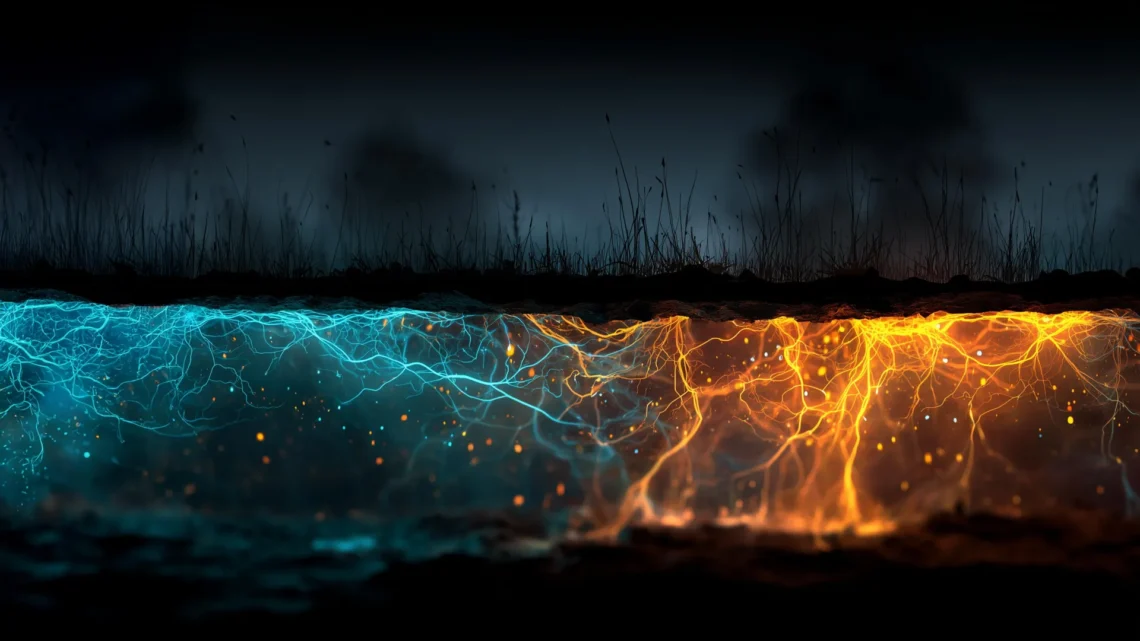Beneath our feet lies an unseen world of electron exchanges that power the chemistry essential for ecosystems, govern water quality, and determine how pollutants behave. A recent review published in Environmental and Biogeochemical Processes reveals how electrons traverse through soils and sediments over surprisingly large distances—sometimes ranging from centimeters to meters—transforming our understanding of underground environments and suggesting new methods for cleaning up pollution.
Redox reactions, which involve the transfer of electrons between chemical species, are vital for life and maintaining environmental balance. These reactions dictate nutrient cycling, contaminant movement, and how microbes generate energy. Historically, scientists thought these reactions were limited to small “hotspots” at the surfaces of minerals or microbes. However, this new study, led by researchers from the China University of Geosciences, demonstrates that electron transfer (ET) in the subsurface can extend well beyond the tiny nanoscale, connecting distant chemical areas into extensive underground electron networks.
At the microscopic level, ET happens right at the interfaces of minerals and water or between microbes and minerals, where individual molecules or cells swap electrons over distances of just a few nanometers. Yet, recent findings showcase more significant processes: conductive minerals, natural organic compounds, and unique bacteria called “cable bacteria” can serve as electron bridges, facilitating charge movement over centimeters. In some instances, sequential connections create “long-distance ET chains” that stretch across tens of centimeters, forming underground electron highways.
“These findings challenge the outdated notion that electron transfer is solely local,” stated Prof. Songhu Yuan, the study’s lead author. “We’ve discovered that redox processes can connect across remarkably long distances, linking reactions in one area to those in another. This has major implications for contaminant cleanup and environmental sustainability.”
The review emphasizes how these multiscale ET processes affect both natural cycles and human-led pollution management initiatives. For instance, long-distance ET can enable “remote remediation,” where pollutants are degraded in hard-to-access areas without needing direct chemical application. Conductive minerals or added biochar can enhance microbial activity, while cable bacteria allow for oxygen from the sediment surface to interact with sulfide found deeper underground, reducing harmful emissions.
The authors propose future directions for ET research, including developing improved technologies to measure electron flows across different scales, creating models that connect nanoscale reactions with larger field processes, and designing remediation techniques that utilize these natural electron pathways.
“Our work establishes a conceptual framework for viewing the subsurface as a unified redox system,” remarked co-author Dr. Yanting Zhang. “By understanding how electrons move underground, we can better predict the behavior of nutrients and pollutants and formulate more effective strategies to safeguard groundwater and ecosystems.”
This synthesis blends core scientific insights with real-world applications, offering hope that future environmental engineers may tap into Earth’s own “electron grid” to rejuvenate contaminated soils and aquifers.
Summary: A recent review in Environmental and Biogeochemical Processes reveals that electron exchanges in soils occur over long distances, reshaping how we understand underground environments. These processes play a crucial role in nutrient cycling and pollution management, suggesting innovative strategies for cleanup and environmental sustainability. Future research aims to develop better tools and models to enhance our understanding of these interconnected electron networks.





